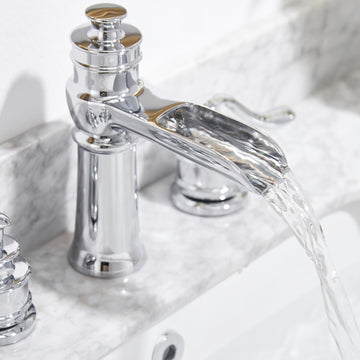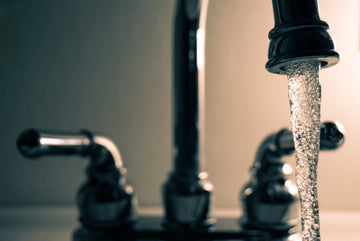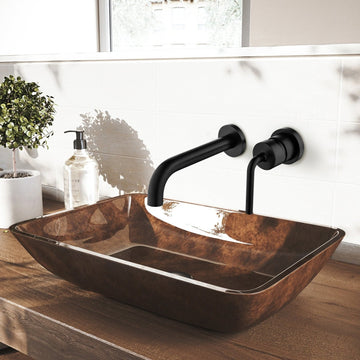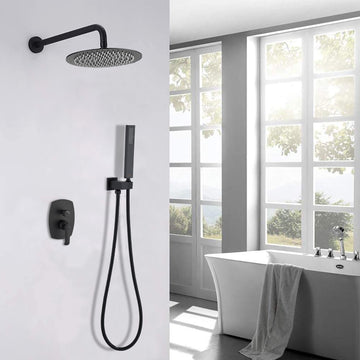
When it comes to water pressure in your home, everybody has an opinion on what is adequate. One family member’s trickle of water is another family member’s high-power firehose.

Low Water Pressure
Low water pressure is certainly an annoyance for many homeowners. Not only can it increase the time it takes to do things like a shower, wash dishes, and water outdoor plants, but it also significantly increases how much water is used doing these simple tasks.
And it’s aggravating. It could take forever to fill a sink or bathtub. A shower head may give you a spray that’s weak or anemic. Your dishwasher or washing machine may take a long time to complete a cycle.
If you’re getting low to no water pressure in a single fixture, it probably makes sense to focus on fixing that one fixture or the pipes serving it. But low water pressure in the whole house requires that you discover the cause.
What Causes Low Water Pressure in the Whole House?
Knowing what causes low water pressure in your house is absolutely critical to seek a resolution. Common causes of low water pressure include:
- Open Water Meter Valve
There usually are two water meter valves in most homes – the customer valve located in your water meter box and the home valve, located in front of your house. Both of them can get turned ever-so-slightly away from the on position, causing low or even no water pressure in your whole house.
- Leaking Pipes
It may be difficult to find, but a leaking pipe can also be a cause of low water pressure. The best way to find out for sure is to take a reading from your water meter, then shut off all faucets in your house. Leave for a few hours, the read your meter when you return. If there’s a difference, you have a leak somewhere.
- Failing Pressure Regulator
Pressure regulators, normally preset for 45 to 60 pounds per square inch (psi) can wear out after years or decades on the job.
- Mineral Deposits
Older homes with galvanized iron pipes often have mineral build-up that has accumulated over decades. Or they can be corroded enough to restrict water flow.
- Time of Day
You could have low water pressure in your whole house because a lot of things are happening at peak times: several people using different bathrooms for early morning or late afternoon showers. Or even that you and your neighbors are all on the same schedule for water use.
How To Fix Low Water Pressure
Naturally, it’s critical to know the causes of the low water pressure in the home before you can find a workable solution. But the most obvious are:
- Make sure your water meter valves are open
- Fix leaking pipes
- Replace failing pressure regulator
- Replace steel water pipes
- Vary water use
Unfortunately, many of the solutions for low water pressure in the house are beyond the skills of the average homeowner. Horizon Services has decades of experience with plumbing repair with more trucks and more technicians serving our area.
Measuring the Water Pressure in Your Home
One way to arrive at a peaceful settlement is to determine your home’s water pressure in a definitive measurable way. Thus, having periodic water pressure readings is always a good idea.
A water pressure reading will tell you exactly how forceful your water is in PSI (pounds per square inch). Normal water pressure is generally between 40 and 60 PSI; most homeowners prefer something right in the middle around 50 PSI. Once you measure your home’s water pressure, you can adjust it to a setting that is ideal for all family members and household uses.
Checking and adjusting your water pressure can also save you money and improve the quality of your life. If the water pressure is too high, you may be using too much water each day; if it’s too low, you may be taking longer to perform cleaning and bathing tasks or not adequately getting the job done. (If you’re a shower taker, chances are you want all the pressure you can get!)
Water pressure readings are a great way to monitor the health of your plumbing system. Sudden changes in water pressure could be a sign of a serious plumbing problem. Decreases in water pressure and flow could indicate a serious blockage somewhere in your piping. And surges in water pressure intensity are not normal and could put undue stress on pipes, fixtures and appliances (such as your washing machine and dishwasher). Too much pressure can also wear down washers, cause faucets to drips and leaks, as well as make toilets run constantly
A plumber can always take a water pressure reading for you. But if you’re a hands-on homeowner, this is something you can do for yourself. Many homes have a water pressure gauge — usually in the basement or near an outdoor spigot. You can also purchase water pressure gauges in most hardware stores for $10-20. These water pressure gauges are pretty easy to install, operate and read; just screw on to any indoor or outdoor faucet. You should try to take a reading from as many faucets as possible including outdoor hose spigots and the faucet that connects to your washing machine.
Don’t Have Time to Install and Use a Water Pressure Gauge? Try the Multi-Flow Test!
Here’s a simple low-tech way to see if your home has or doesn’t have adequate water pressure. Run a washing machine or dishwasher; then turn on a couple of sinks in the house, as well as the shower and other plumbing fixtures. If water doesn’t flow strongly out of any of these faucets and fixtures, or flows fine on one floor but not on another, you probably should increase your water pressure.
Adjusting Your Water Pressure
Most houses built in the last 25-30 years have a pressure-reducing valve on the supply line coming into the house. It’s usually pretty simple to adjust that valve to increase or reduce the water pressure. First, locate the valve; most likely it will be found near your water meter in the basement or possibly in a crawlspace. The pressure reducing valve is made of brass with a bell-shaped middle section with a screw at the end of the bell.
Turning that screw adjusts the water pressure. To increase your water pressure you tighten the screw down by turning it clockwise; to decrease the water pressure, turn the screw counter-clockwise. Do this in small increments, making sure to measure your water pressure after each adjustment.
If these adjustments don’t work for you, if you’re not comfortable making these adjustments yourself or if you live in an older home, we recommend calling a plumber. A plumber can find the pressure reducer valve (or install one if your home doesn’t have one). Your plumbing professional can also identify if your bad water pressure is due to a more serious problem in your piping or outside of your house.



